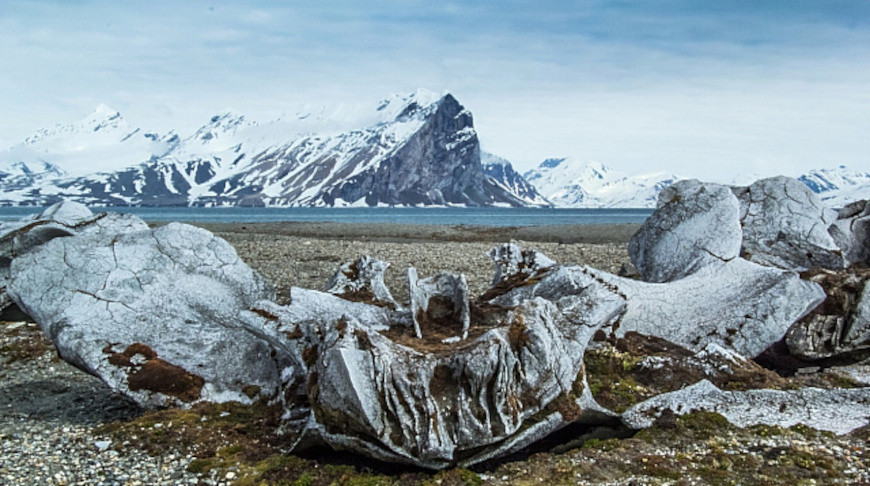
Photo: iStock
MOSCOW, 28 July (BelTA - TV BRICS) - Russian scientists from the Arctic
and Antarctic Research Institute (AARI) have uncovered a significant
concentration of ancient whale remains on Wilczek Island, part of the
Franz Josef Land archipelago.
The discovery was made amid research on permafrost dynamics and glacial retreat, as reported by the official website of the Ministry of Natural Resources and Environment of the Russian Federation.
According to AARI researcher Nikita Demidov, satellite image analysis and on-site measurements showed that the island’s glacial dome split into two sections in under 20 years, exposing several square kilometres of marine terrace.
This newly revealed area contains numerous well-preserved whale skeletons, some partially thawing at the glacier’s edge. The concentration and condition of the remains suggest a rapid sea level change episode in the high Arctic within the past few thousand years.
The degree of preservation reportedly increases with proximity to the glacier, indicating long-term entrapment in permafrost conditions. These findings offer critical insights into the palaeoecology and climatic history of Eurasia’s northernmost archipelago, the source claims.
The discovery was made amid research on permafrost dynamics and glacial retreat, as reported by the official website of the Ministry of Natural Resources and Environment of the Russian Federation.
According to AARI researcher Nikita Demidov, satellite image analysis and on-site measurements showed that the island’s glacial dome split into two sections in under 20 years, exposing several square kilometres of marine terrace.
This newly revealed area contains numerous well-preserved whale skeletons, some partially thawing at the glacier’s edge. The concentration and condition of the remains suggest a rapid sea level change episode in the high Arctic within the past few thousand years.
The degree of preservation reportedly increases with proximity to the glacier, indicating long-term entrapment in permafrost conditions. These findings offer critical insights into the palaeoecology and climatic history of Eurasia’s northernmost archipelago, the source claims.













